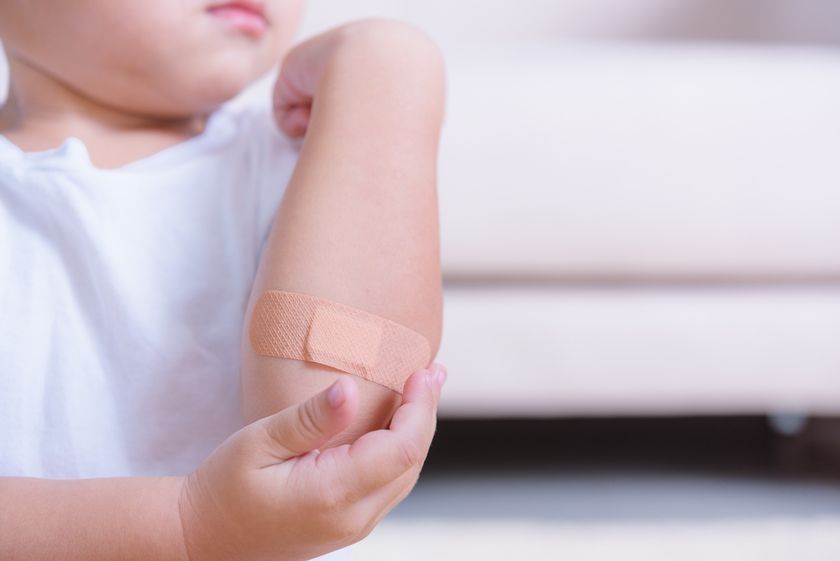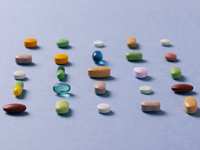- Categories :
- More
Six Common Childhood Injuries and How to Prevent Them

Parenting often feels like a delicate balance between letting children explore and protecting them from harm. Kids are naturally curious, so they climb, taste, touch and test just about everything they encounter. While a few bumps and bruises are an inevitable part of growing up, many serious injuries are preventable if you implement the right measures. Chinonyerem Pace, MD, a pediatrician with Children’s Memorial Hermann Pediatrics Atascocita, discusses the six most common types of childhood injuries and the practical steps you can take to help protect your child.
#1 Falls
The most common cause of preventable injuries among children is falls, which can lead to sprains, fractures or even head injuries. “There’s so many different ways a fall can occur, but they most often happen around stairs,” explains Dr. Pace.
The best way to protect your kids is to childproof your house. Install safety gates at both the top and bottom of stairs and be sure to place edge protectors on sharp furniture corners. These efforts can reduce the danger in areas where kids tend to wander or climb.
Parents should also pay special attention to bed and crib safety, Dr. Pace cautions. When transitioning from a crib to a toddler bed, guardrails help prevent nighttime tumbles. If your kids sleep in bunk beds, be sure to have rails on the top bunk to keep them in place overnight. For everyday slips, consider nonslip mats under rugs, encourage kids to use handrails on the stairs and remind them to always walk instead of run on smooth or wet floors.
#2 Burns
Burns can happen quickly and in unexpected ways—from a splash of hot liquid to curious or unsteady hands grabbing a hot pan. “You want to make sure your children are at least three feet away from any hot appliances like stoves, irons or hair dryers,” Dr. Pace advises.
However, many kids want to help in the kitchen, and cooking with your children can be an excellent bonding and learning experience. If you do include your kids in kitchen time, Dr. Pace offers some practical tips to encourage safety:
- Turn pot handles inward
- Use back burners whenever possible
- Remind your child of the dangers of touching a hot burner/pot
- Give them low-risk tasks
Teaching children kitchen safety is essential, but Dr. Pace stresses that parents must implement firm limits. “Kids who are allowed to microwave or handle hot dishes while unsupervised risk significant scalds or burns,” she explains. “So let your kids know that they can only cook on stoves, burners or microwaves when you or another adult is helping them.”
#3 Choking
While children of all ages can choke on food, small toy parts or random household objects, toddlers are especially at risk because of their tendency to stick things in their mouths. It’s important to keep small items well out of reach. Two prime culprits, according to Dr. Pace, are button batteries that power watches and small electronics and coins.
Certain foods require extra preparation—particularly grapes, hot dogs, nuts or hard candies—because they are easy to swallow incorrectly. “It’s important to be mindful of the foods you’re giving your children,” Dr. Pace says. “You want to make sure that you’re thoroughly cutting food into small pieces.”
And when it comes to meals, if you notice your kids are eating too fast, Dr. Pace states that it’s essential to remind them to slow down and chew their food well.
She also emphasizes the importance of caregivers knowing basic first aid, especially administration of the Heimlich maneuver. A few hours spent in a class or watching an accredited demonstration video can make a life-or-death difference if a child does choke. Keeping an eye on your kids as they eat and play—and teaching them not to over fill their mouths—also helps reduce the risk of choking.
#4 Motor Vehicle Accidents
Car accidents are a leading cause of severe injuries in children, but proper restraint systems can save lives. Dr. Pace notes that infants and smaller toddlers should remain in rear-facing seats until at least 2 years old or until they exceed the seat’s height and weight limits. Older toddlers and preschoolers can use forward-facing seats, followed by booster seats until they are about 4 feet and 9 inches tall.
Additionally, Dr. Pace advises that children under 13 years old should ride in the back seat to avoid the force of a potential airbag deployment. Beyond seat restraints, leaving children alone in a hot car is a well-documented danger. “As the temperatures rise, especially in Texas and other southern states, it is extremely dangerous to leave a child in the car, even for a minute,” Dr. Pace mentions.
While newer cars may have sensors to let you know to check the backseat, make it a habit to go the extra step and put your purse, bag or wallet next to your child in the backseat. This will ensure that you always open the back door to retrieve your items. Adopting this small habit can prevent tragic oversights.
#5 Sports Injuries
While playing sports benefits children physically and socially, it also carries the risk of injury—from sprained ankles to concussions. “In Texas, sports are popular, and some parents will go so far as to overlook things just to ensure that their kid gets playing time,” Dr. Pace says.
Urging kids to “play through pain” can lead to worse injuries or long-term problems. There are some practical actions a parent can take to reduce sports injuries in their child:
- Ensure that your child’s protective sports equipment, such as helmets, pads, mouthguards and footwear, fits properly to prevent many common issues.
- Teach children the proper way to warm up their body before—and cool down after—an activity to reduce strains and sprains.
- Ensure children stay hydrated, especially in the sun, to reduce heat-related illnesses.
Finally, Dr. Pace also recommends your child’s primary care provider perform an annual sports exam. “Your child’s physician knows your child’s medical history and may like to do further testing if something looks off,” she said.
These routine exams can catch potential health risks, such as heart murmurs or elevated blood pressure, before they become serious on the field.
#6 Poisoning
Accidental poisoning can happen through common household items and is often overlooked. Dr. Pace stresses that “a child can be poisoned by everyday items,” including the following:
- Medications (both over the counter and prescription)
- Vitamins
- Cleaning supplies
- Other household chemicals
Parents should store dangerous products in high cabinets, if possible, and should consider installing magnetic locks for an added layer of security. If a child ever ingests something questionable, contacting Poison Control or 911 immediately is the best course of action.
Children also need to learn early that they should never pick up or eat a pill they find on the ground. Because some medications look like candy, clear rules and frequent reminders help reinforce that only an adult can dispense medicine safely. Even older kids need these reminders: They might assume that anything in a pill bottle is harmless simply because they see adults taking it.
Keeping Our Kids Safe
Parents cannot protect children from every bump or scrape, but thoughtful preparation and close supervision can drastically reduce the likelihood of severe injuries. Each of these six risks—falls, burns, choking, motor vehicle accidents, sports injuries and poisoning—can be mitigated through a combination of practical strategies and consistent education.
Dr. Pace’s advice to actively observe your kids and teach them about these dangers underscores the heart of prevention: a watchful eye, clear rules and patient, ongoing guidance. By putting these measures in place consistently, you’ll foster a safer environment where your kids can embrace their natural curiosity with fewer dangers in their path—and parents can enjoy greater peace of mind.

















